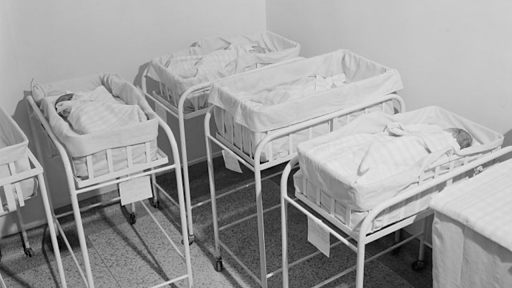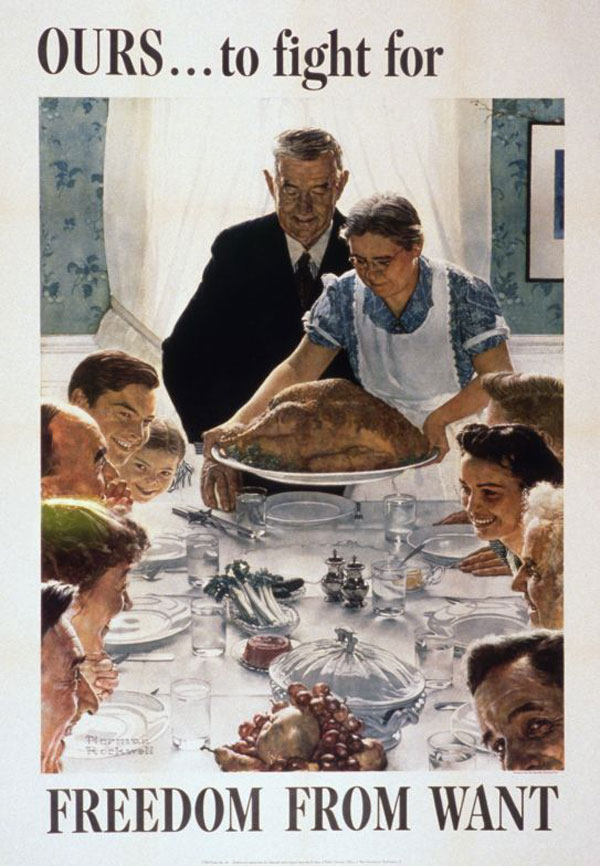The Baby Boom After World War Ii Led Directly to
The hardships and uncertainties of the Great Depression and World War II led many couples to delay marriage and many married couples to delay having children. This demographic phenomenon is usually ascribed within certain geographical bounds of defined national and cultural populations.

The Baby Boom Article Khan Academy
William Levitts houses were not initially available to blacks.

. As Jeremy Greenwood details in his paper The Baby Boom and Baby Bust there are three main arguments to the theory that the baby boom occurred due to the increased fertility resulting from the end of the Great Depression and World War II. What shortage was created by the post-World War II baby boom. People who were born after World War II between 1946 and 1964 are considered baby boomers and they have experienced some of the most significant events in American history.
The baby boom was the result of couples holding off on having children due to the Great Depression and World War II. And more than 4 million were born every year from 1954 until. First a pure catch-up effect should have no influence on lifetime fertility since one less child today would just be made up.
A shortage of houses d. Need to increase the number of schools in the 1960s. Throughout history protests concerts and wars have defined generations baby boomers are no different.
A baby boom is a period marked by a significant increase of birth rate. We argue that one major cause of the US. The post-World War II baby boom was caused in part by A marriage at an earlier age.
Once the baby boom began the average woman started getting married around the age of 20 instead of 22. 39 million were born in 1952. The dramatic increase in the number of births from 1946 to 1964 in the United States 1947 to 1966 in Canada and 1946 to 1961 in Australia is called the Baby Boom.
Terms in this set 25 The most popular household product after World War II was the air conditioner. This brought about a significant. In 1947 another 38 million babies were born.
Figure 1 shows the US. In this paper we propose a novel explanation for the baby boom based on the demand for female labor during World War II. A shortage of schools i think its a.
D the invention and distribution of the. A 1000kg load is suspended from the end of a horizontal boom. The postwar economy proved to be more robust which encouraged families to have more children.
C women refusing to go back to work after the war. As more Americans moved off the farm and into the city having a large family slowly transformed from a good labor investment to a poor economic choice. Need to decrease the number of.
The sharp rise in births after World War II boosted the American economy by generating increased demand for services and suburban housing. The wars end followed by a sustained period of economic prosperity the 1950s and. This was the beginning of the so-called baby boom.
The boom is supported by a cable that makes an angle of 35deg with the boom. Consumerism Following World War II American consumerism flourished after World War II as manufacturing shifted away from military production to consumer production with advertisers targeting mainly women living in the. The baby boom after world war ii led directly to.
The 18th amendment banned the selling of alcohol and contributed to organized crime. The baby boom began in the late 1950s. This increment was due to the unprecedented global economic growth that followed the war.
We develop a quantitative dynamic general equilibrium model with endogenous fertility and female labour force participation decisions. TFR from 1917 to 2001. The 1960s to below 20 by 1973.
TFR lows preceding and following the baby boom were 215 and 174 respectively. The best-known baby boom occurred in the. Answer 1 of 3.
Migration from cities to farms in the 1970s. The dramatic increase in the US. During the 1940s particularly in the time after the end of World War II the population saw an increase of 19 million.
The baby boom TFR maximum is 368 which was reached in 1957. The baby boom after World War II led directly to A a decrease in spending for public education B a return to a rural lifestyle C an increased demand for. Eliminate B the loss of population during the war.
Population after the war can be attributed to several factors. These are the 15 moments that made the boomer generation who they are. Also the generation born in the US.
The baby-boom was a demographic phenomenon that occurred after WWII between 1946 and 1964 characterized by an increase in the birthrate. The cause of baby booms involves various fertility factors. The basic features of this TFR increase can be observed in most Western.
The ideas of led to the founding of the democratic party. It was also different in every country although the terms demographic origin is often attributed to the US situation. People born during these periods are ofttimes called baby boomers.
The best-known baby boom occurred in the mid-twentieth century sometimes considered to take started later the finish of the Second World War sometimes from the late 1930s and catastrophe in the 1960s. People born during these periods are often called baby boomers. Like many industrialized Western nations in the early twentieth century the United States was experiencing a gradual decline in its birthrate.
Baby boom in the US the increase in the birth rate between 1946 and 1964. 1 Show answers Another question on History. The classic Baby Boom from around 1945 some say earlier to about 1960 or maybe 64 1 is more complicated than it looks.
The cause of baby booms involves diverse fertility factors. The baby boom following World War II resulted in the. The ideal woman in 1956 according to Life magazine was one who balanced home and career.
Also note that the postWorld War II baby boom lasted roughly two decades in the United States. Couples were eager to have babies after the war ended because they knew that the world would be a safer place to start a family. As documented by Acemoglu Autor and.
Understand firstly that - at it. The baby boom constituted a dramatic if temporary reversal of a century-long trend towards lower fertility rates. A shortage of food products b.
A shortage of hospitals c. Understanding its causes is a key challenge for demographic economics. True or false.
Consequently the young range of the population was larger during the 50s and 60s which combined with economic. It was caused by young males who upon returning to the United States Canada and Australia following tours of duty overseas during World War II began families. Post-war baby boom was the rise in female labour supply during World War II.
Development of urban unrest in the 1950s.

The Baby Boom Article Khan Academy

Baby Boomers Year Range Definition Facts History


No comments for "The Baby Boom After World War Ii Led Directly to"
Post a Comment